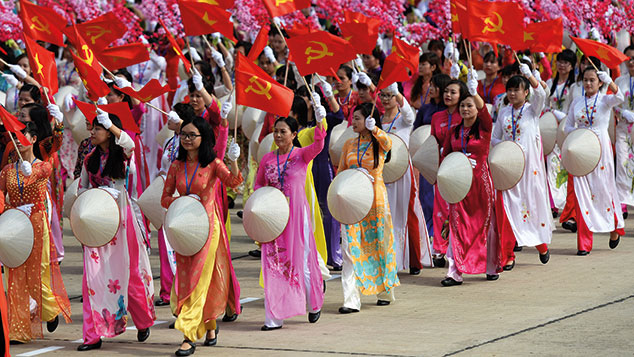
Asia’s best-performing stockmarket last year “wasn’t China and had little to do with tech”, says Assif Shameen in Barron’s. It was Vietnam, where consumer and manufacturing firms were the key drivers of a 48% increase in the Ho Chi Minh Stock index.
So far this year, the market has gained another 13%. Foreign investors have been piling into the market, propelling daily turnover to $300m from just $50m four years ago. “On a good day,” there is more activity than on some of the region’s more established bourses, such as Manila in the Philippines.
The young go shopping
No wonder: the Vietnam story is compelling. The Communist government introduced market reforms in 1986, transforming the country into one of Asia’s fastest growers, notes Bloomberg. The economy, which expanded by 6.8% last year, has now been growing at this sort of pace for almost two decades.
After an extended bout of turbulence earlier this decade, inflation is back under the government’s 4% target. The country now boasts a current-account surplus, not least because the robust global economy has boosted exports to record levels.
At first, Vietnam was seen as a cheap version of China with well-educated workers, and thus primarily suitable as a manufacturing base. But as foreign investment has soared (it rose by 50% year-on-year in the first seven months of 2016, for instance), and expertise spread, industry has moved up the value chain. In 2015, 30% of all exports were electronics items. In 2010 the figure was 5%.
Opening new opportunities
The government is now accelerating its privatisation programme to entice further foreign investment, as well as reduce the budget deficit of around 4% of GDP. Stakes in 245 state companies are available, with six times more shares on offer than last year. Rules governing foreign ownership have been gradually liberalised over the past few years. The young, 90 million-strong population – of which around 70% are between 15 and 64 – will provide a large workforce and a source of consumption for years to come. Vietnam’s middle class is expected to grow from 12 million in 2012 to 33 million by 2020. Retail sales grew by 10.9% to a record $130bn last year.
It’s no wonder, then, that stocks are close to an 11-year high. The market isn’t cheap any more, but the Vietnam Opportunity Fund (LSE: VOF), which invests in property and private equity as well as listed companies, still trades on a 16% discount to its net asset value.